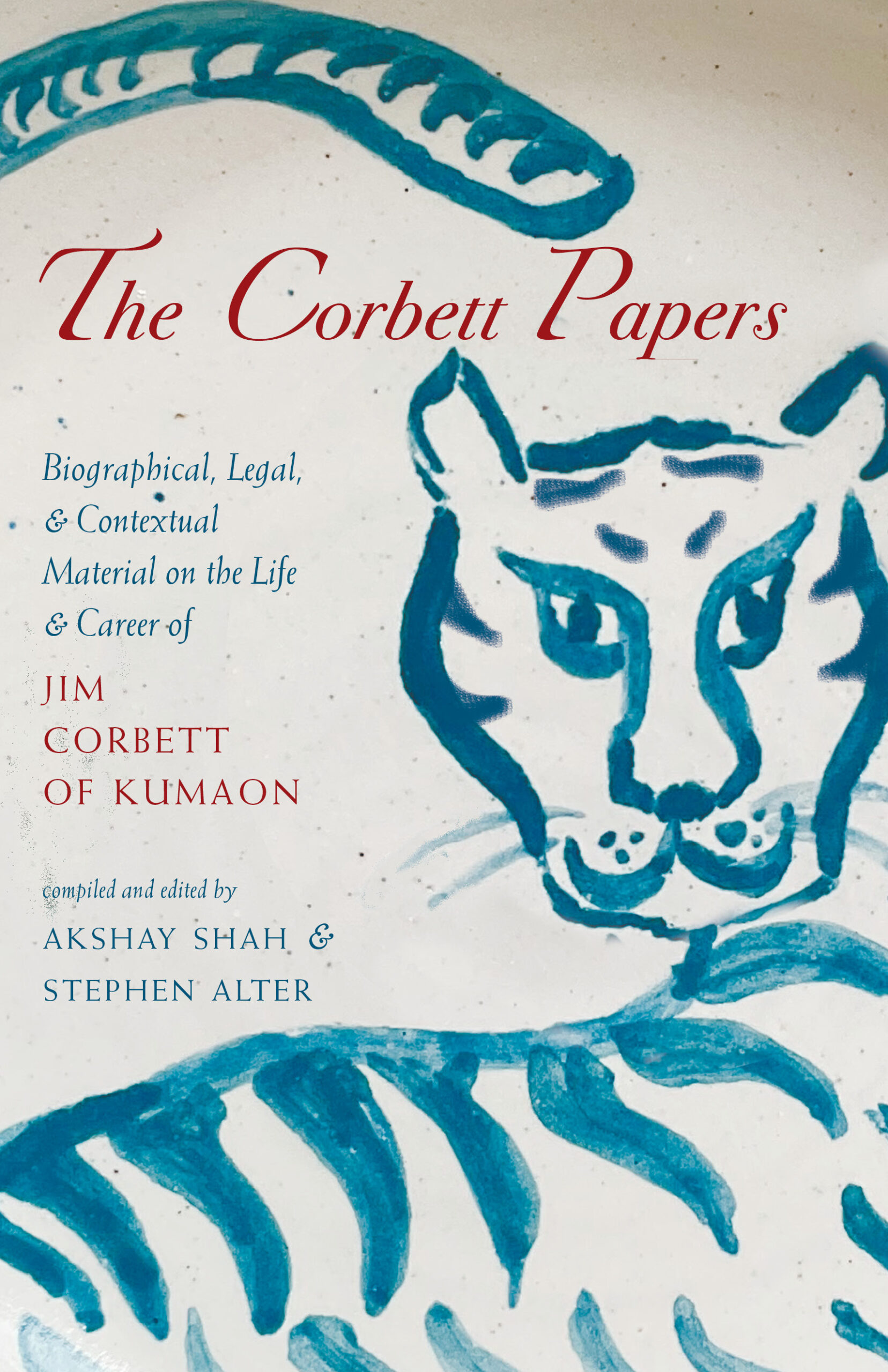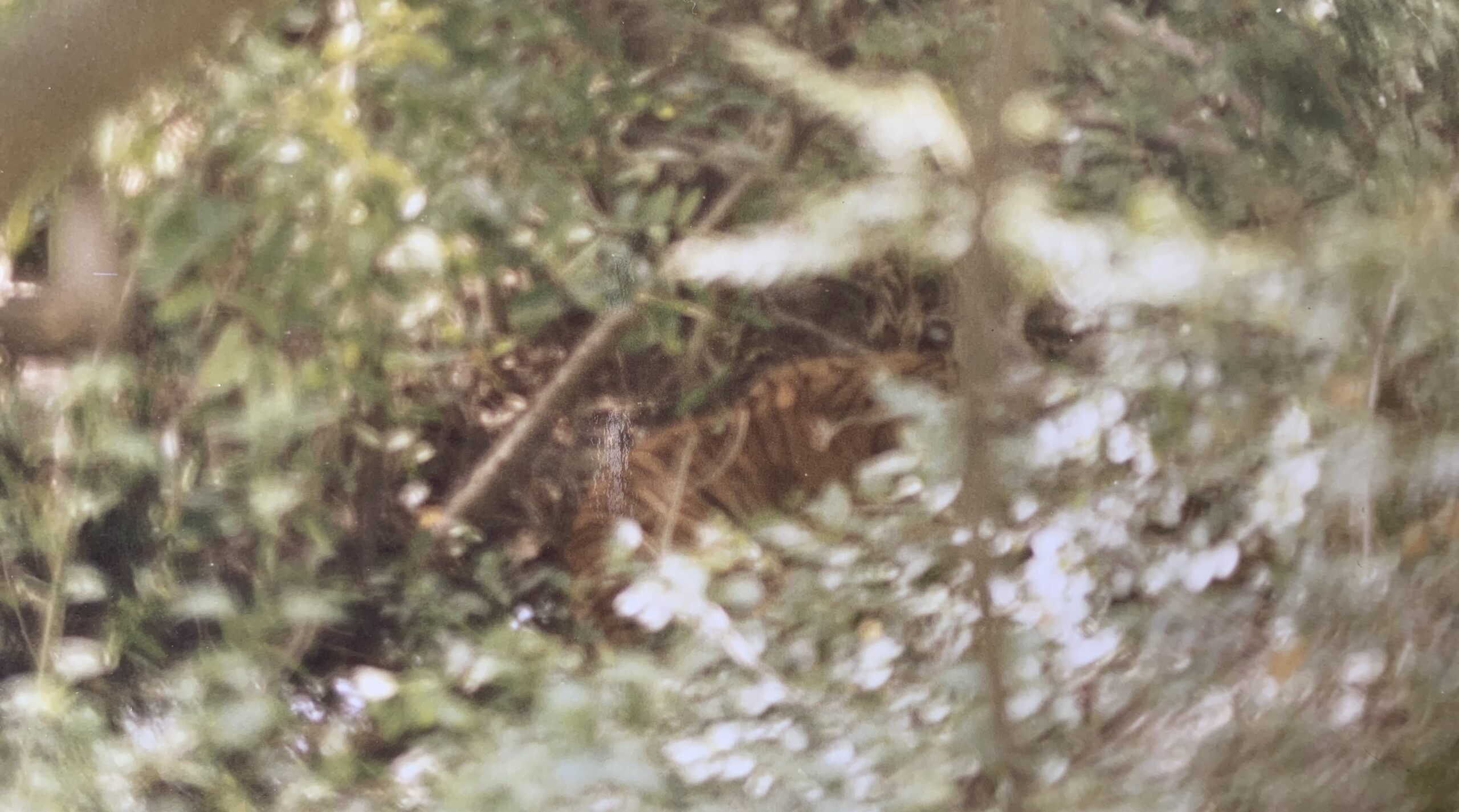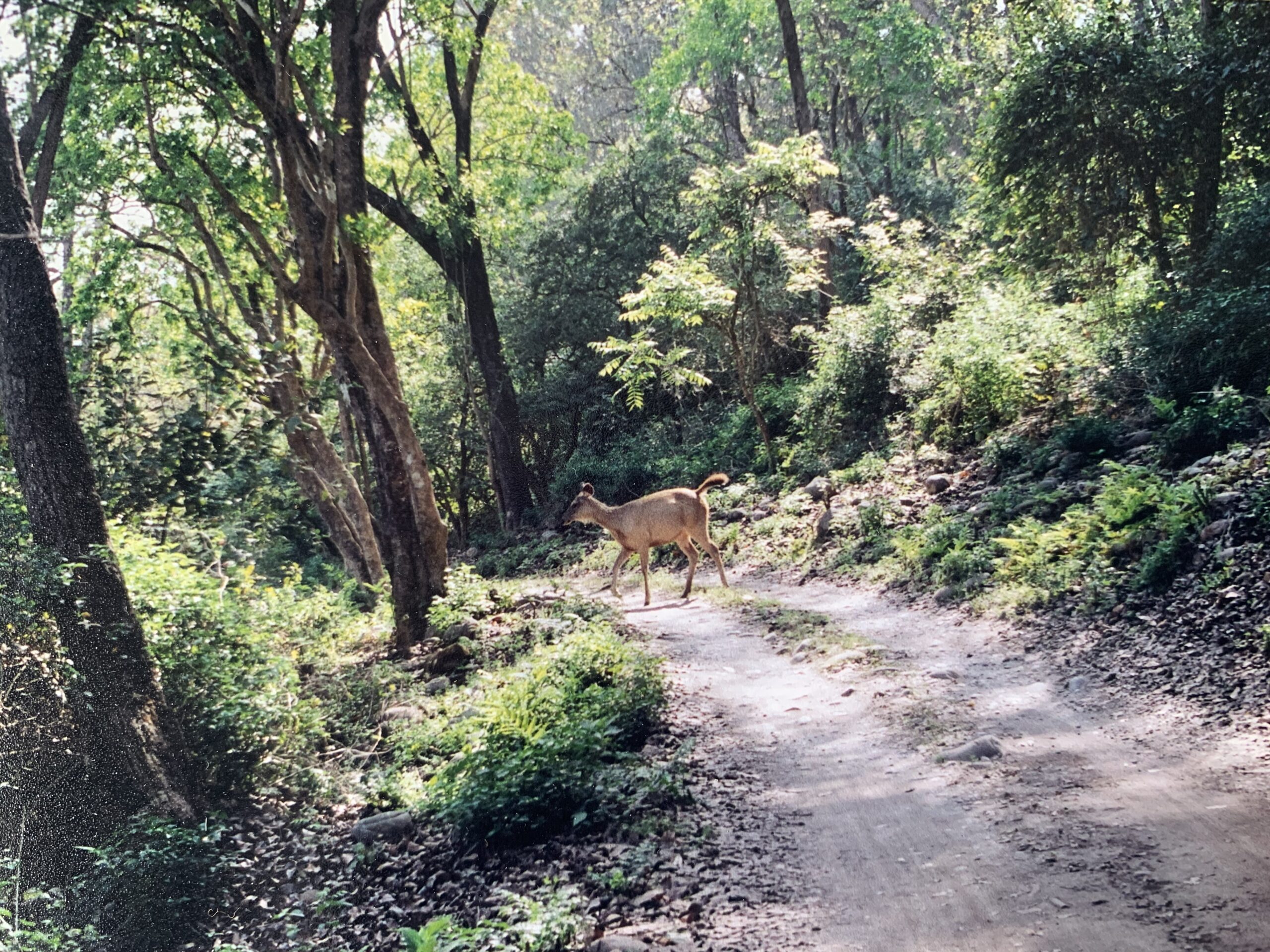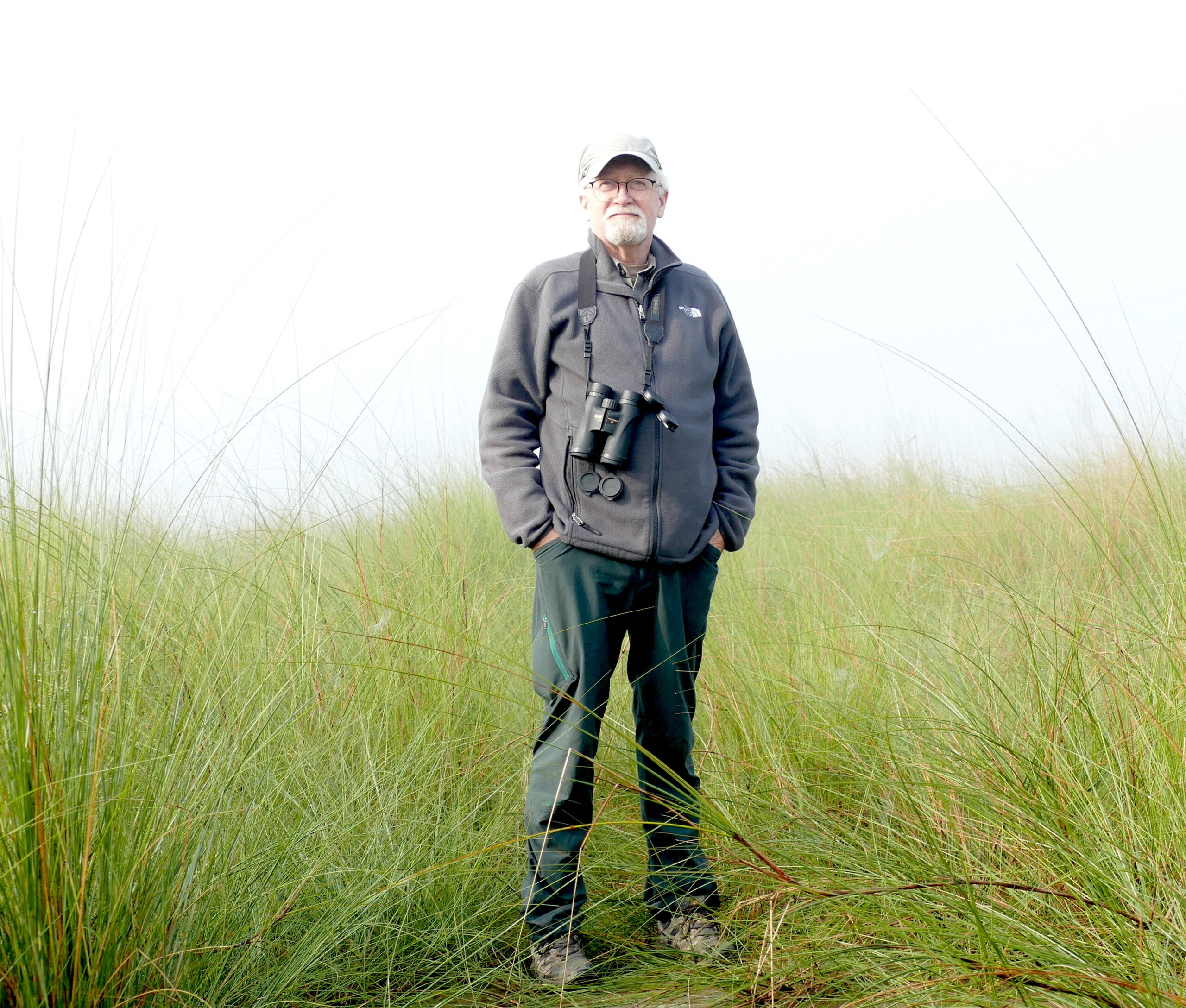
Literary Speaking: Jim Corbett’s legacy as a writer
 By Ranjit Monga*
By Ranjit Monga*

Jim Corbett’s legacy should be seen more as a writer than as a hunter, having created a whole genre of nature writing that a lot of people have tried to emulate, says well-known author Stephen Alter.
Alter, who is an avid Corbett watcher, also lays importance to the fact that a lot of naturalists and conservationists have used Corbett’s writing, and quoted him extensively on the question of protecting tigers and wildlife conservation in general. “So, that is the real legacy he has left behind and that is what we should look for to know about Jim Corbett, rather than finding articles that he used or things which he left behind,” he says.
Alter is an award-winning author of more than 20 books himself, two of which are on Corbett – a novel In the Jungles of the Night and the more recent The Corbett Papers, which is a compilation of some papers and documents connected to Corbett’s life, which have not been published before. This book has been edited by Alter and Akshay Shah.
Some other books written by Stephen Alter
Non -Fiction
All the Way to Heaven: An American Boyhood in the Himalayas, Amritsar to Lahore: A Journey Across the India-Pakistan Border, Sacred Waters: A Pilgrimage Up the Ganges River to the Source of Hindu Culture, Elephas Maximus: A Portrait of the Indian Elephant, Becoming a Mountain: Himalayan Journeys in Search of the Sacred and the Sublime & Wild Himalaya: A Natural History of the Greatest Mountain Range on Earth (2019)
Fiction
Neglected Lives, Silk and Steel, The Godchild, Renuka, The Dalliance of Leopards & Feral Dreams: Mowgli and His Mothers
Jim Corbett was born in India, in a British family which had settled in India in the middle of the 19th century and remains one of the most enigmatic personalities from the colonial era, for conservationists, nature lovers and adventurists. Jim spent his childhood in Nainital and was once an ace hunter, who shot many man-eaters who had created havoc in the jungles of the Kumaon and Garhwal regions of present-day Uttarakhand. Corbett moved to Kenya during partition in 1947 and penned many books describing his hair-raising exploits in the Jungle, in which he shadowed ferocious man-eating tigers for days on end. His books span a genre, which Alter describes as something new and unprecedented in nature writing in the country. His books have been read by millions in the last century or so. The book Man-eaters of Kumaon alone has sold over 3.5 million copies.
“If Corbett had shot only man-eaters, he would have been a footnote in the history of colonial India in the early part of the 20th century. His name would not have had the same recognition that he now has because of the books he wrote so evocatively about the forests and wildlife of India. He created a whole new audience for wildlife adventure writing through his books,” explains Alter.
“Both naturalists and conservationists say that Corbett gave up the gun for the camera, how true is that we don’t know, but this popular story has inspired wildlife conservationists, to protect and preserve the forests of India,” he adds.
Alter points out that it is important to remember that Corbett wrote his books many years later when he moved to Kenya, so he had the benefit of hindsight. “He was hunting in the 1920s and 30s but wrote about it when he was in his early 60s and early 1970s, so what you’re getting in most of his books is a story about a young man in his 20s, 30s in his prime told by his older self, looking back on his life and by that time he was becoming a conservationist”, says Alter.

“I don’t think he regretted shooting maneaters, but I think he did realize that the time for hunting had begun to end, and it was important to protect species like tigers and other wildlife that were endangered in some way. Even in the 1950s, conservation was not at the top of anyone’s list, whether it was in India, Britain or even in Kenya, but Corbett was beginning to make those statements about protecting wildlife. I think that it was something that had evolved over the course of his life,” Alter elaborates.
Alter says that Corbett comes across as a very compassionate person, according to his Last Will and Testament, which is published in the book, The Corbett Papers. According to the Will, Corbett left money for several institutions for the blind, for playgrounds, which he stipulated were to be used by people of all races. “He is definitely going against the grain of colonial stereotypes, and it brings out the empathy he had for people who were disadvantaged,” he adds.
The documents contained in the book include the first book which Corbett self-published titled Jungle Tales of which only about a hundred copies were published in the 1920s. Many of the stories from this book later appeared in different books of Corbett. Out of the various documents, Alter finds the short reminiscence by Corbett’s sister Maggie, the most interesting as it brings out a different side of Corbett. This memoir was narrated by Maggie to a companion in Kenya before she passed away.
“Maggie lived with Corbett for most of his life. He mentions her in many of his own stories, but we never really get her voice or hear things from her perspective in any of the other books, or even the biographies that have been written about him so that reminiscence I think is unique. She mentions the incident when Corbett fell down from a tree when trying to photograph a leopard. She had to sort of nurse him back to health. Meanwhile, their cottage at Kaladhungi caught fire and he had to be rescued and was completely immobilized for several months after that accident. But Corbett himself never mentioned this incident in any of his books,” Alter points out.
Alter, who is based in Mussoorie, is optimistic about wildlife conservation in India. He feels that though there is still reason for concern and raising awareness about protecting wild places as well as wild species, there’s no doubt that the job isn’t finished, and we need to be constantly vigilant. “ I don’t think there will be any time in the future where we can let our guard down in terms of conservation, but I’m much more optimistic than I would have been say, twenty or even thirty years ago, because I think that because of efforts like ‘Project Tiger’, which is now 50 years old, wildlife scientists, conservationists and state forest departments have put enormous effort into protecting the places that tigers inhabit and as a species the tiger has been brought back from the edge of extinction,” Alter opines.
In the book The Corbett Papers, there is also a description of the ‘Jim Corbett National Park’ in Uttarakhand, which was written by DC Kala in 1954. DC Kala was also the person who wrote the first biography of Jim Corbett. The account itself is quite fascinating as it mentions all the known spots like Dhikala, the Ramganga River, Sapdhuli and Sultan, which frequent visitors to the park are familiar with.
Alter feels that even though the topography of the park hasn’t changed much, it was quite different then.
“What was happening was people were actually hunting in the buffer zone of the park and he (DC Kala) describes that in his account, he describes how he didn’t see a whole lot of wildlife, certainly not tigers. There was apparently a huge amount of disturbance along the periphery of the park, and that I think has changed now,” says Alter.
Kala also cautioned against too much tourism in the park and suggested striking a balance, for example having limits to how many vehicles enter the park and how many people surround a tiger when it happens to step out of the bushes.
“It is very important that the tourists that do visit these national parks understand why they’re going there. They’re not going there for a picnic. They are going there to see something that is unique, that is part of India’s natural heritage and that is what these parks must be for visitors. There should also of course be a sanctuary for wildlife and there should be sections of the parks that are not disturbed in that way,” Alter opines.
“I think that each person will also bring to a place, their own memories, their own spiritual triggers, whatever you want to call it. So, some people that visit the Corbett National Park, the fact that it’s named after him, may have certain responses, along with the element of nostalgia. For me, it’s a place I’ve been visiting for more than fifty years and the river itself is a very powerful presence in that forest and it’s something that I certainly respond to on an emotional level. I respond to it, you know, at a spiritual level, I suppose in the sense that it is a place where I appreciate the solitude of nature and the beauty of nature. There are very few rivers that are as beautiful as the Ramganga. There’s no question in my mind I can say that with complete certainty, but each person, I’m sure takes away their own impressions their own emotions that a place like that inspires and arouses,” says Alter.
“Corbett and his books inspire us to look at nature closely and look at all aspects of nature and to look at the interconnectedness of nature so that when he writes about a bird giving an alarm call, as the tiger is approaching, you are aware that it’s not just one species. There are dozens of species and in most cases, it’s a bird. It may be a jungle fowl, it may be a jungle babbler, or it may be a langur that is calling or barking deer.

And each of these voices that he refers to in his stories are voices that we can hear today. We don’t have to be sitting up in a machan to hear them. His books really inspire a close observation of nature, to immerse ourselves in nature, not just at Corbett National Park, but it might be standing on your terrace in Delhi, surrounded by parakeets and neem trees,” says Alter drawing a stirring picture in his remarkable style.
Alter had also undertaken a journey in the late 1970s that sort of retraced the spots where Corbett’s stories played out. Undoubtedly, a fascinating journey during which he says he certainly felt the presence of Corbett’s tales, for example, the story about the Temple Tiger and the Mysterious lights of Purnagiri, with their layers of mythology, folklore, and adventure.

Alter, who is of American descent, was born and has lived his entire life in India. And as he agrees that there are elements of Corbett’s life which are parallel to his own, does he understand why Corbett left India?
“I can’t say for certain why he left, but I do have a constant sense of where do I belong. I think it’s not something that I myself worry about too much, but other people seem to worry about it much more than I do, and I suspect in Corbett’s case that was probably the situation too. A lot of the colonial residents of Nainital and that part of Kumaon were all packing up to leave in 1947. And Corbett chose to leave with them,” he says.
“Also, I think there was a lot of uncertainty in terms of how anyone who stayed back would be treated. Many people of British ancestry did stay back in India and continued to live in India and lived a happy life after independence. But for Corbett, I think there was a certain amount of uncertainty, his health also was not very good. He’d been sick many times and I think he and his sister decided that rather than face the uncertainty, they would move to Kenya where his closest friends were also moving. Interestingly enough, they did not move back to the United Kingdom because they really had no home there. So, they saw the Highlands of Kenya as an alternative to Kumaon,” informs Alter.
Listen to the full interview on Spotify
https://open.spotify.com/episode/4ihtcuCZIg41XHVuUzPKzh?si=HFAcQR6JQ7iUdHnknP_PuQ
On Apple podcast
https://podcasts.apple.com/in/podcast/books-and-us/id1688845897?i=1000623016237
*Ranjit Monga is a senior journalist and documentary filmmaker





